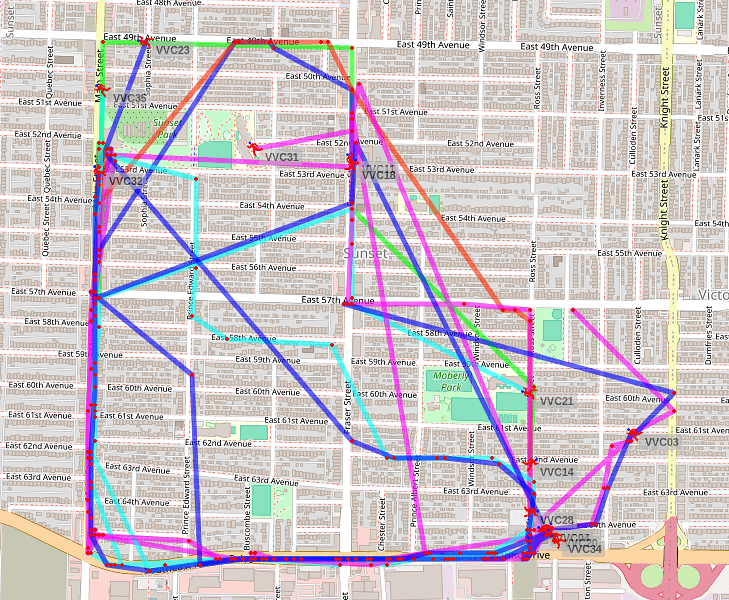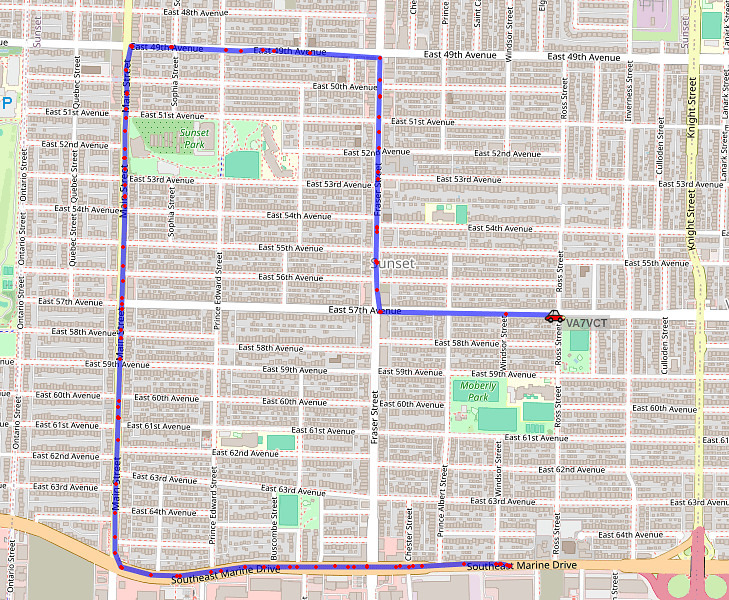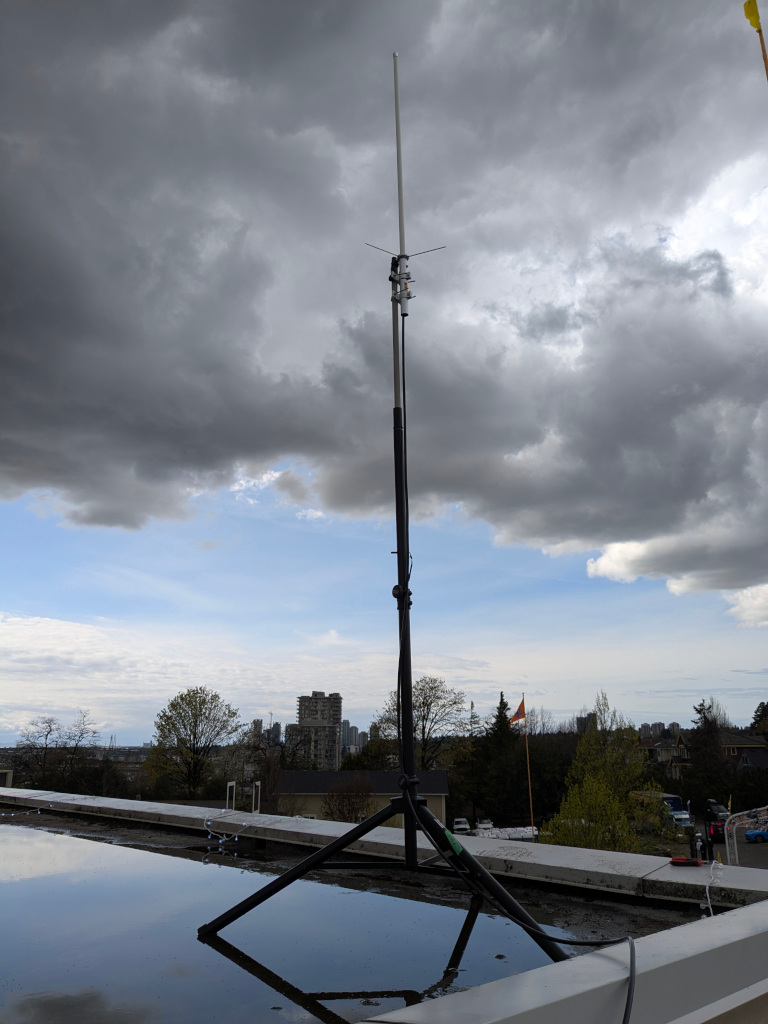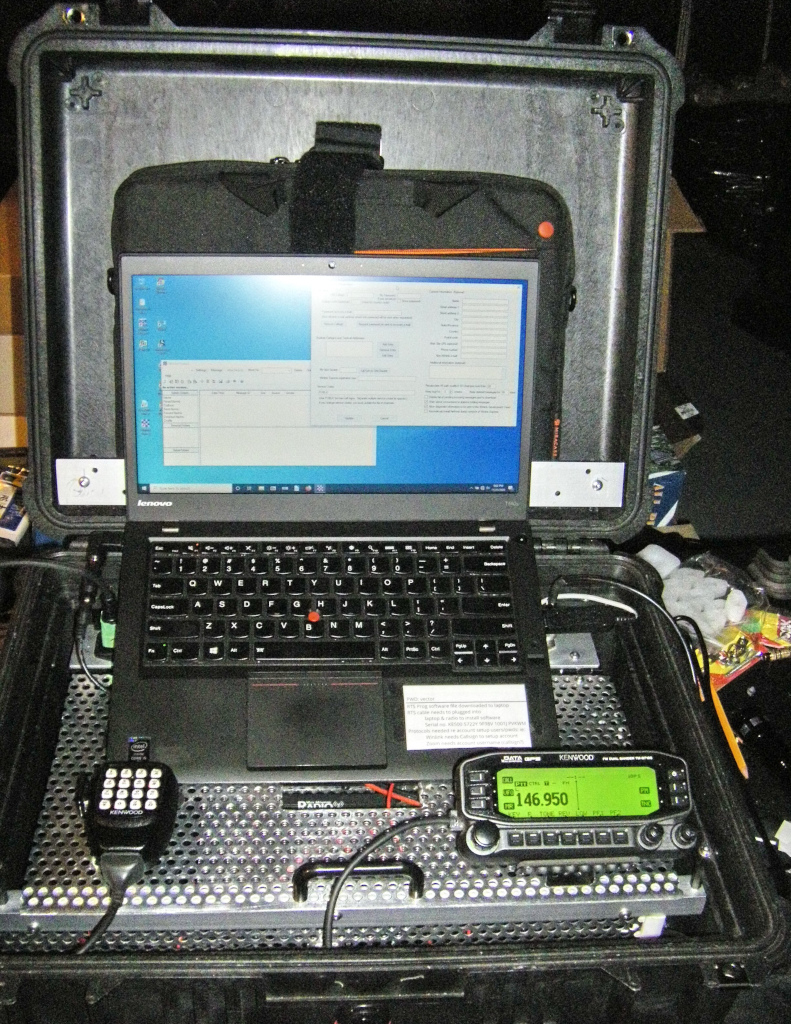VECTOR at Vancouver Vaisakhi 2025
Posted
On April 12th, VECTOR volunteers helped support the 46th annual Vaisakhi parade through the Punjabi Market neighbourhood in south Vancouver. Using amateur radio, volunteers along the parade route could report observations to event organizers and other first responders in the event coordination room.
It was a beautiful sunny day, although with a bit of a windchill in the shade. VECTOR ran a directed net with tactical callsigns assigned to 2-person teams. 14 VECTOR members worked a mix of half-day and full-day shifts, swapping roles and positions in the early afternoon. Thanks to our radio operators: Harondel VA7MCZ, Lis VA7EVJ, Paul VE7PXG, Bob VE7WOC, Jessé VE7DET, Mika VA7MYU, Erich VE7EEF, Manny VE7FCB, Ian VA7IT, Darryl VA7DPO, Stuart VE7SWS, Wendy VA7WRD, Pam VA7KGO, and Tim VA7WYA.
The topography of south Vancouver poses some challenges to amateur radio communication. Due to a south-facing slope with varying degrees of grade, there are areas of the parade route that are not well covered by local repeaters. Simplex communication across the route also suffers from similar dead spots, and APRS coverage is likewise impacted. To help make the event a success and ensure smooth radio communication, several VECTOR members helped with a variety of tasks leading up to the parade date.
Radio coverage tests
One of the first steps in planning VECTOR’s participation in the event was trying to determine which repeaters might provide the best coverage of the route and what could be used as a fallback option. VECTOR members Lis VA7EVJ, Wendy VA7WRD, Stuart VE7SWS, Ian VA7IT, and Harondel VA7MCZ helped test multiple repeaters and simplex frequencies from various points along the parade route to provide signal reports. Special shout-out to Lis VA7EVJ for cycling the route several times with different radio antennas to help identify dead spots.
In the end, the majority of the route was workable on our usual VE7RVF repeater, but with some dead spots primarily along Marine Drive at the lowest point of the route. To facilitate communication between all the operators and net control with minimal confusion, we opted to use the simplex output frequency of the VE7RVF repeater as a fallback. That allowed volunteer teams to help relay from other teams and allowed net control to hear both repeater and simplex stations without needing to change frequencies.
Heldheld and APRS setup
For events, VECTOR provides volunteers with pre-programmed Kenwood TH-D72A radios that include built-in APRS reporting of GPS positions. This allows net control to track teams on a map, which is very valuable for confirming the location of a team when they are reporting an incident. In the lead-up to Vaisakhi, Darryl VA7DPO and Andrew VA7YAA updated all of VECTOR’s handheld radios to the latest firmware and reprogrammed them all with APRS beaconing turned on. There’s a battery life tradeoff between time-based beaconing and PTT-release beaconing, but particularly in areas with spotty coverage, more beacons provides a higher likelihood of positions being picked up on the map.
From previous experience, we knew there were a few areas of the parade route where APRS beacons hadn’t been picked up very well. To help alleviate that problem, we set up a temporary APRS Internet Gateway nearby, using a SignaLink USB sound card, Direwolf as a software TNC, and the PinPoint APRS software. Thanks to Andrew VA7YAA, Darryl VA7DPO, and Paul VE7PXG for getting this up and running.
The following map shows the reported positions of VECTOR volunteers over the course of the event:

We also had a standalone Byonic APRS tracker mounted on the lead vehicle of the parade, which was picked up quite well thanks to its larger magmount antenna. Thanks to Anthony VE7XAK and Paul VE7PXG for setting up the tracker.

Radio Station for Net Control
To ensure our net control station in the event control room had a good signal with good reception, we set up a temporary antenna mast on the roof of a nearby building with feedlines running down to the control room. This provided line-of-sight over the surrounding buildings and into the repeater, as well as good simplex coverage of areas at the bottom of the slope. Thanks to Ian VA7IT, Lis VA7EVJ, Darryl VA7DPO, and Harondel VA7MCZ for helping to set up the equipment for the control room; and thanks to Stuart VE7SWS, Wendy VA7WRD, and Tim VA7WYA for taking it down at the end of the day.
Our net control station operated with one of our “Vision” Grab & Go radio kits, including a dual-band Kenwood TH-D710G base station. This was connected to a Comet GP-9 dual-band antenna.


Participation in events like Vaisakhi is both a fun way to support our local community, and an opportunity to practice on-air radio skills and exercise our equipment. As a result of the setup work for Vaisakhi, we’ve helped members develop capabilities that will serve the community in future events.
VECTOR would like to extend a heartfelt thanks to the City of Vancouver’s Film and Special Events Public Safety team, the Khalsa Diwan Society, and the staff of the Sunset Community Centre.